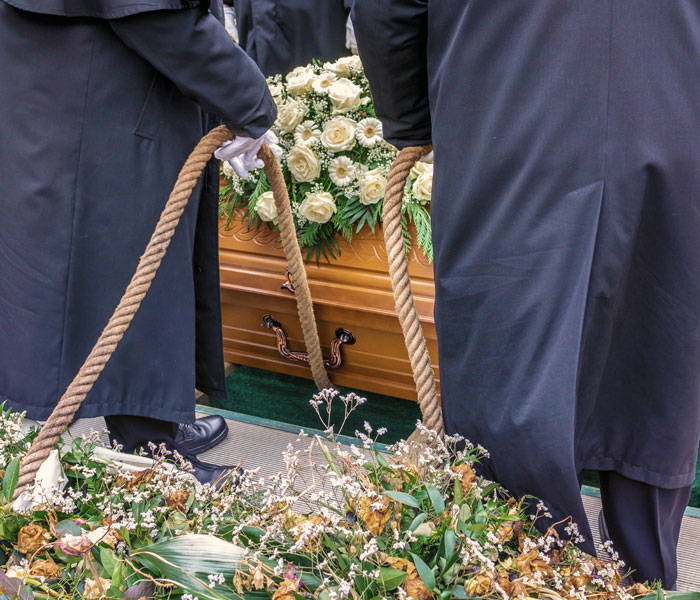A burial is the interment of the remains (a coffin or ashes) into a grave, usually in a cemetery or natural burial site. Anybody can apply for a burial, it does not need to be done by a funeral director.
You may choose to have a funeral service beforehand or opt for a simple burial (known as a direct burial) without a separate service, in which case you may want to organise a celebration of life service at a later date.
The first thing to decide is what type of burial you want to organise. You can then book the burial and send out invitations.

Cemetery burials
If choosing a cemetery burial, you will need to complete an application form (‘Notice of Interment Form’) where you indicate if you are applying for ownership of a new grave or wish to open an existing grave. This form must be returned to the bereavement office at your local district council at least 3 days before the date of the burial.
Where an Exclusive Right of Burial has been granted in respect of the grave and a request is made to prepare it for a burial, the Deed of Grant must be presented at the Cemetery Office. Burial rights also include the right to erect a memorial or gravestone for the period of the lease.
Cemetery fees
The fees are plot fees (a new grave, reopening an existing grave or interment of cremated remains) and burial fees. If the cemetery is outside the postal area of the deceased (based on the electoral roll register), the purchase fee may be doubled. Graves are rarely available perpetuity – you are applying for ‘exclusive right of burial’ and the grave can be resold once the lease expires (typically after 25 to 100 years).
If may come as a surprise that even if you have paid to reserve a plot, a reopening fee of as much as £1,500 will be payable (more if you live outside of the area).
Woodland burials
Woodland burial grounds are an eco-friendly or green funeral option. Most faiths can be accommodated and woodland graves can be purchased as a freehold or for the right of burial without ownership of the ground or any other rights. If you pre-purchase a plot you will be given a Right of Burial Certificate.
An un-embalmed body is laid to rest in a bio-degradable, non toxic coffin (made from recycled paper, cardboard, wicker, willow, banana leaf or bamboo) or shroud. Alternatively cremated ashes can be scattered (or bio-degradable caskets/urns used), however some natural burial sites do not accept cremated remains. The grave is marked with a living memorial or wooden marker.
The ceremony is usually simple and there are no set rules, you can create your own based on what feels right for you. There is minimal paperwork involved and the fee structure is more simple, with no parish boundary surcharges.
What is a direct burial?
A direct burial is one where the body is transported directly from the mortuary to the graveside without a funeral service. It is a more affordable type of burial than one with the full procession, hearse and ceremony. You can still have a graveside committal and a celebration of life service at a later date.
Caring for the body
Arrangements need to be made for the care of the person who has died until the funeral. For direct burials, there is nothing to be done as the body will be taken directly from the mortuary to the grave.
Otherwise, a funeral home can arrange for the body to be held at a chapel of rest, where viewings can be accommodated. The funeral home will organise washing, dressing and laying the body out. Embalming is also an option for preserving the body (also referred to as hygienic treatment).
Have all your questions been answered?
If you have a question relating to any information on this site, please do ask - or leave a comment below.


0 Comments
Leave a comment